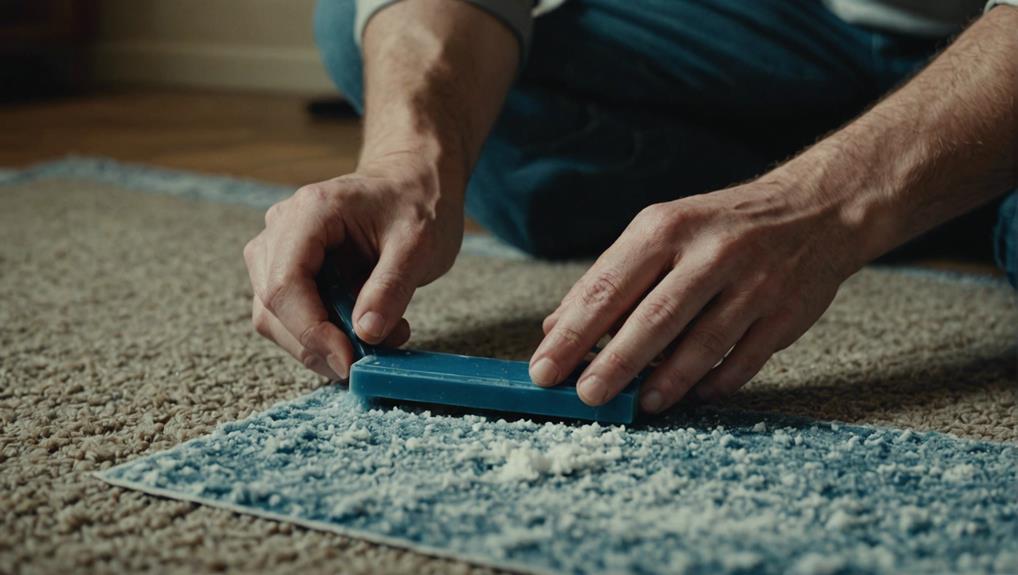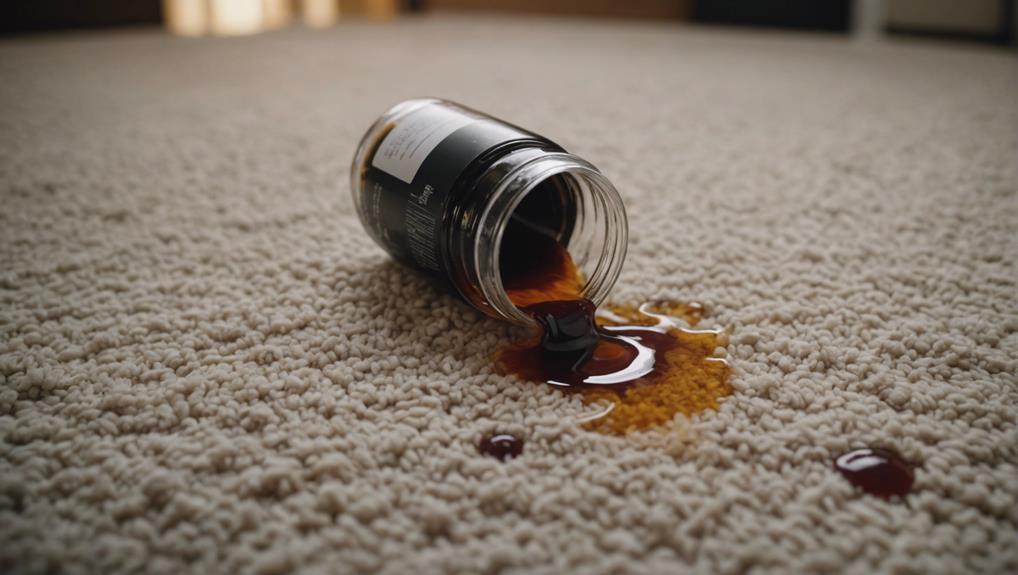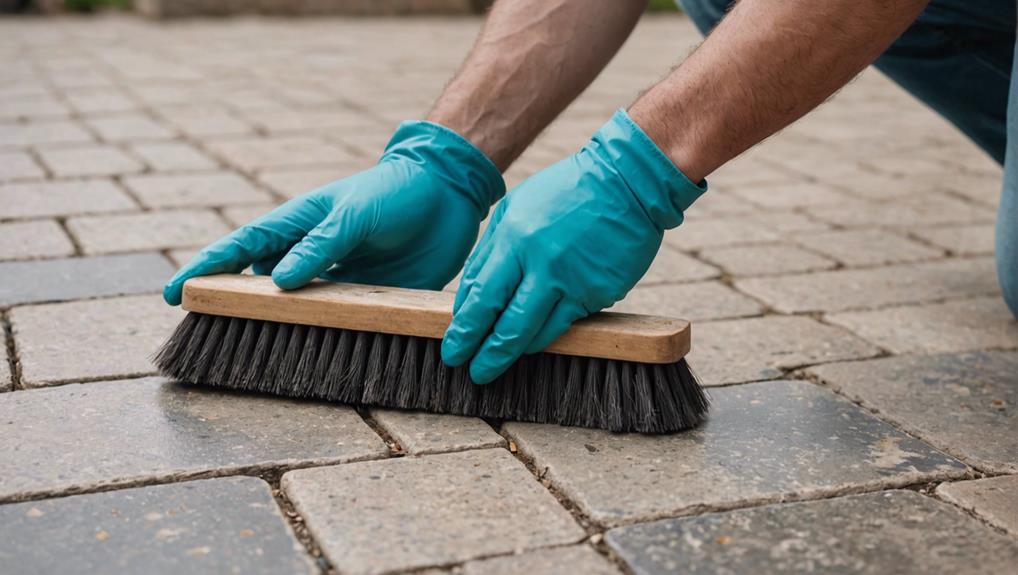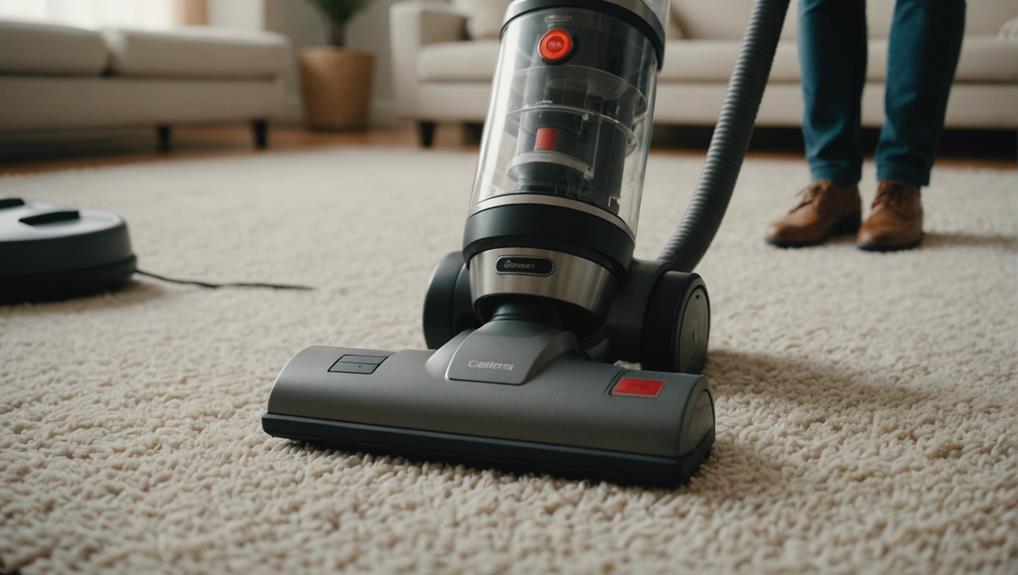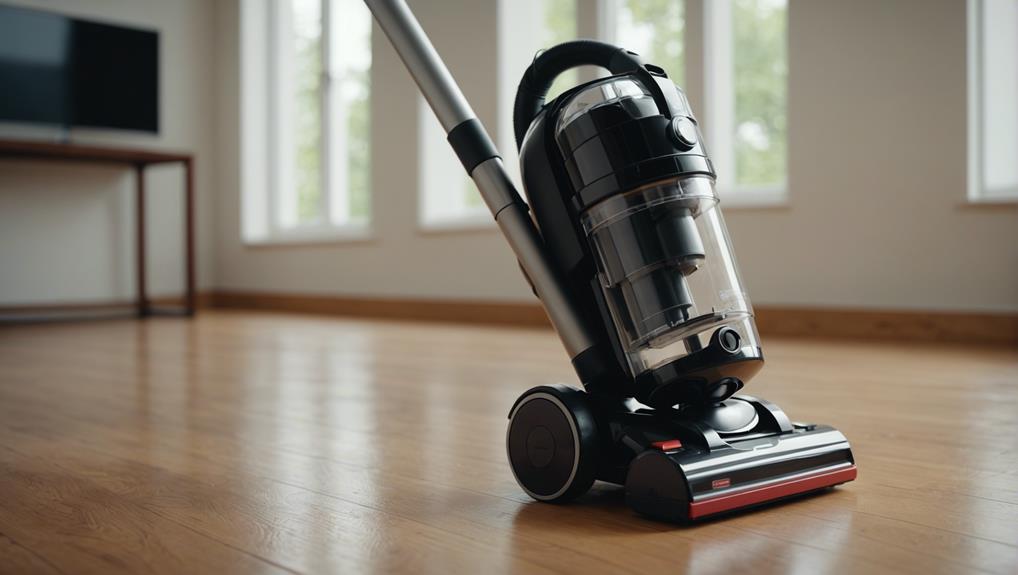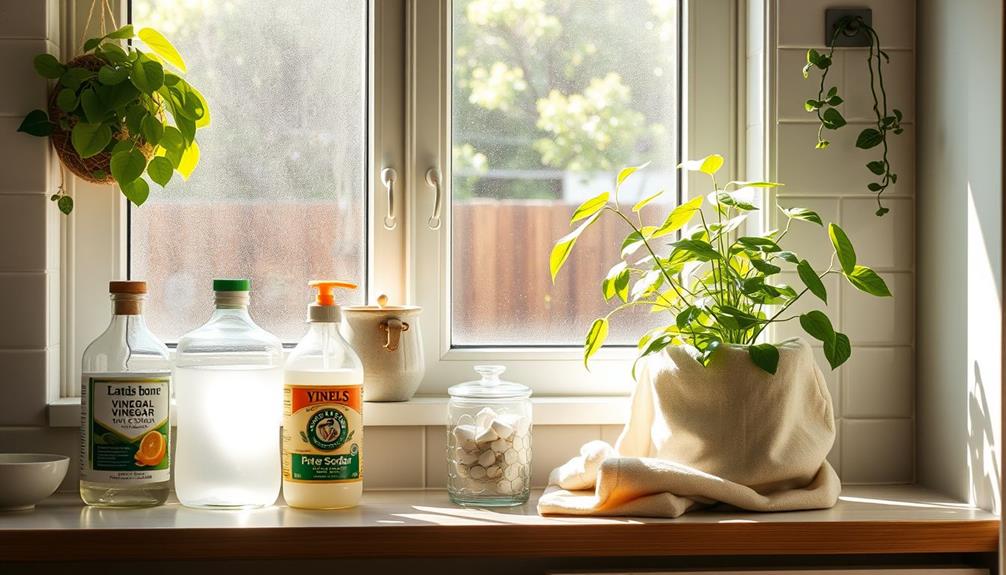To get rid of wax on your carpet, begin by freezing it using an ice pack and then carefully scraping off the frozen wax. Use a butter knife or credit card to scrape and be sure to avoid causing any damage to the carpet fibers. Then, cover the remaining wax with a cloth and use a low-heated iron to soften it, transferring the wax onto the cloth. Repeat this process until all the wax has been removed. You can also consider trying other methods such as using white vinegar, the plastic bag and spoon technique, or removing wax with baking soda for additional assistance. There are various wax removal techniques for you to explore.
Key Takeaways
- Use ice to freeze the wax for easy removal.
- Gently scrape off frozen wax with a butter knife.
- Apply low heat using an iron over a cloth.
- Absorb softened wax with a white cotton towel.
- Use a carpet cleaner or rubbing alcohol to remove residue.
Quick Ways to Remove Wax
To quickly remove wax from your carpet, begin by using ice to freeze the wax for easier removal. Place an ice pack on the affected area to harden the wax. Once the wax is frozen, gently scrape it off with a dull knife or a credit card. Be cautious not to damage the carpet fibers during this process.
After scraping off as much wax as possible, take an iron over a towel and place it on the remaining wax. The heat will soften the wax, allowing the towel to absorb it. Make sure to move the iron gently to prevent any heat damage to the carpet.
Next, use a cleaning solution like a carpet cleaner or rubbing alcohol to remove any leftover residue and stains. Apply the cleaning solution on a clean cloth and blot the area until the wax is completely removed.
Essential Tools for Wax Removal
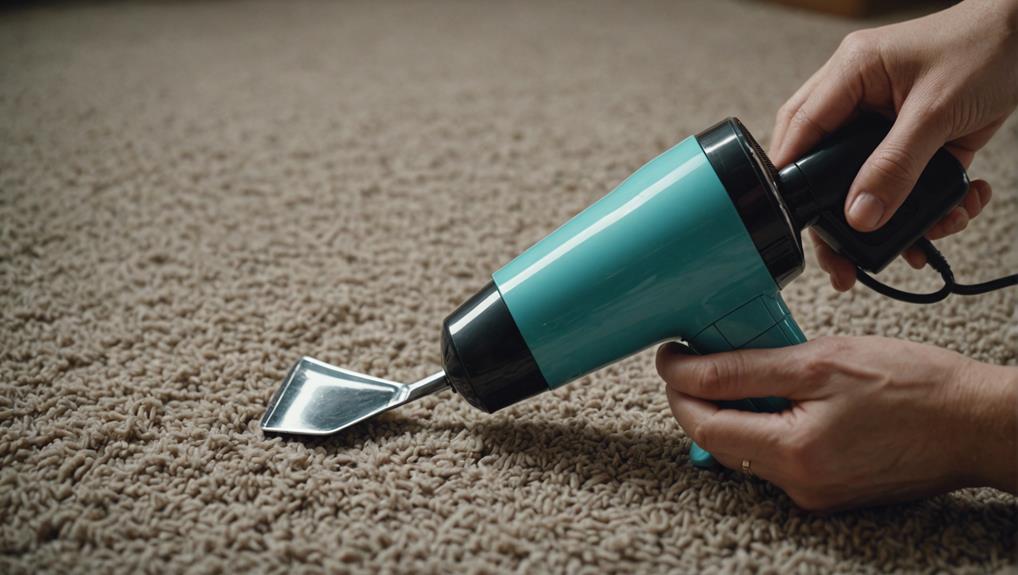
You'll need basic tools like a butter knife, iron, white cotton towels, carpet cleaner, or rubbing alcohol, and a vacuum to effectively remove wax from your carpet.
Start by using the butter knife to gently scrape off any hardened wax from the carpet fibers. Then, set your iron to a low temperature and place a white cotton towel over the wax. Press the iron on the towel to melt and absorb the remaining wax. Repeat this process with clean portions of the towel until no more wax transfers onto it.
Next, apply carpet cleaner or rubbing alcohol to a fresh white cotton towel and dab at any stubborn wax stains on the carpet. Be cautious not to oversaturate the carpet with the cleaner.
Once the wax is entirely removed, vacuum the carpet to restore its texture and appearance. Regular vacuuming can help make certain no residue remains.
Freezing the Wax Method
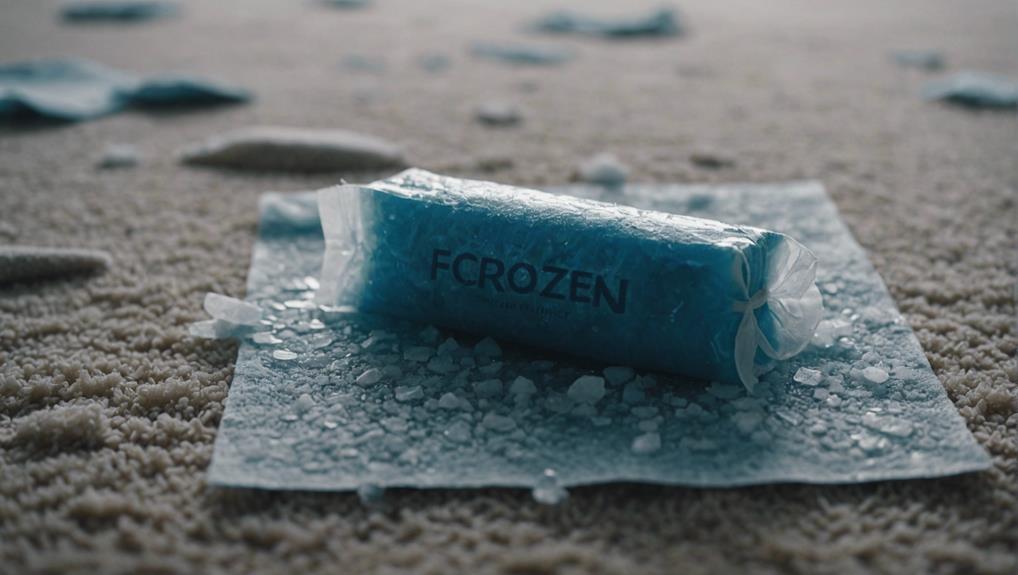
Consider using an ice pack to freeze the wax spot on your carpet for a quick and effective removal method.
Here's how to execute this technique:
- Place a plastic bag of ice or an ice pack directly on the melted wax.
- Let the ice sit on the wax for about 10 minutes to solidify it.
- Use a butter knife to gently scrape off the frozen wax from the carpet fibers.
- Be cautious not to let the ice melt, as the moisture can make the wax stain harder to remove.
- After scraping off the wax, use a vacuum to clean up the removed wax particles thoroughly.
Freezing the wax is a simple yet efficient way to deal with candle wax stains on your carpet. This method helps solidify the wax, making it easier to remove without damaging the carpet fibers.
Scraping Off the Hardened Wax
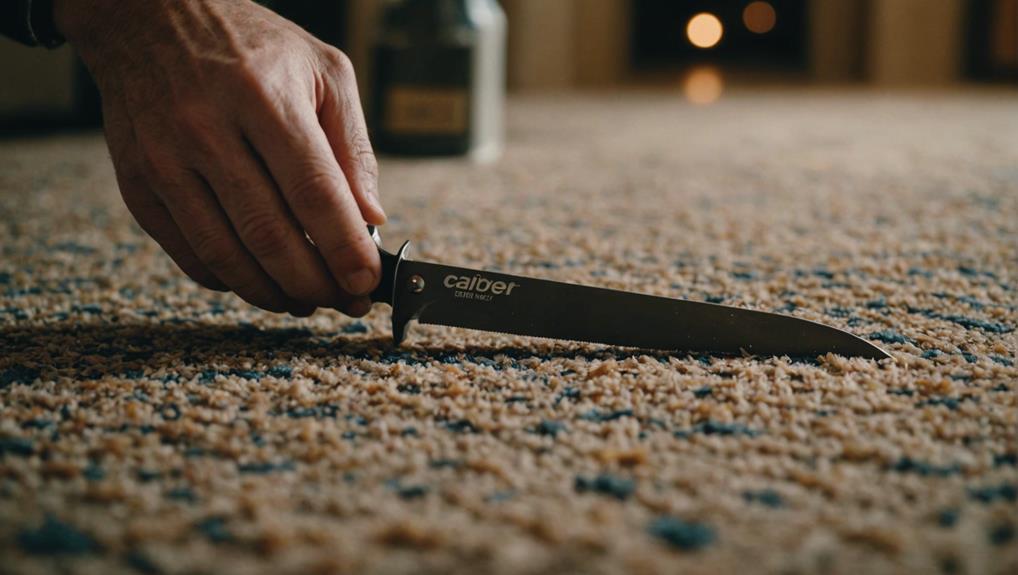
After freezing the wax to harden it, the next step in the process is to gently scrape off the hardened wax from the carpet fibers using a butter knife or credit card. Be cautious not to damage the carpet while removing the wax. Here is a guide for scraping off the hardened wax:
| Tools Needed | Instructions | Tips |
|---|---|---|
| Butter Knife | Gently scrape the hardened wax off | Work slowly and carefully |
| Credit Card | Use the edge to lift and remove the wax | Angle the card for ease |
| Vacuum Cleaner | Clean the area after scraping | Make sure no wax remnants |
Scrape the wax off the carpet fibers, ensuring to remove as much as possible. Take your time to prevent any damage. Once the wax is successfully scraped off, vacuum the area to eliminate any remaining wax remnants. By following these steps, you will effectively remove the hardened wax and prepare the carpet for the next stage of the removal process.
Utilizing an Iron on Wax
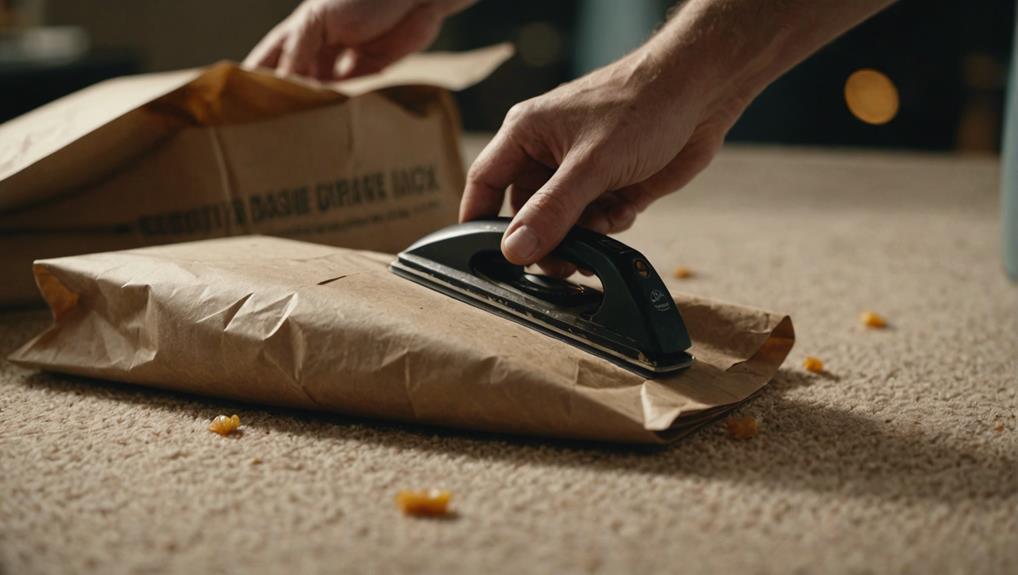
For a quicker and more efficient wax removal process from your carpet, consider utilizing an iron to transfer the wax onto a cloth.
Here are the steps to effectively remove wax using an iron:
- Place a clean cloth over the wax stain on your carpet.
- Set the iron to a low heat setting and gently press it onto the cloth.
- The heat from the iron will soften the wax, allowing it to transfer onto the cloth.
- Lift the cloth periodically to check if the wax is transferring, repositioning the cloth as needed.
- Repeat the process with a fresh cloth until all traces of wax are removed from the carpet fibers.
Using White Vinegar
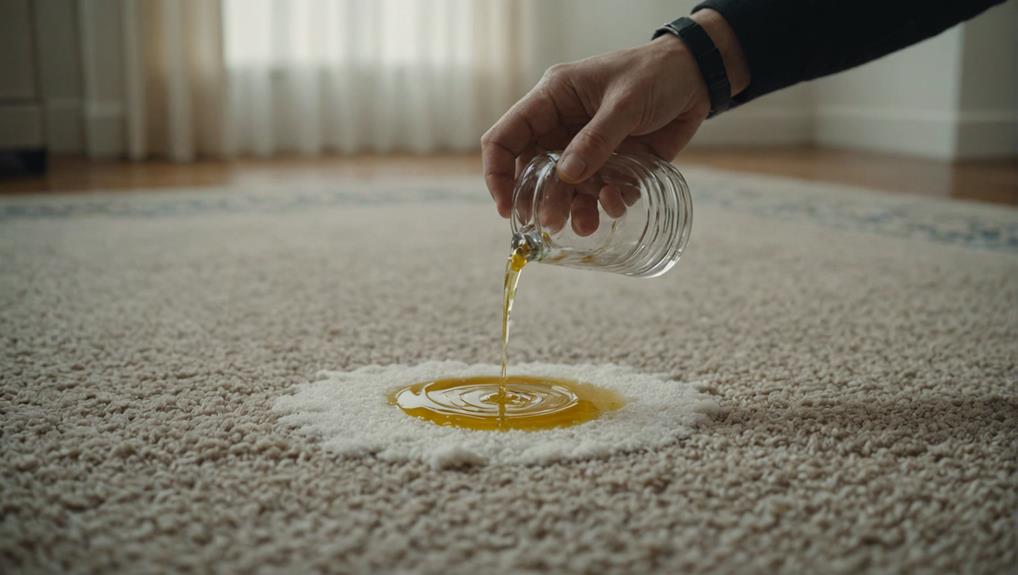
To tackle wax stains on your carpet, white vinegar can be a highly effective and natural solution that helps break down and lift the wax residue from the fibers. White vinegar is a gentle yet powerful alternative to harsh chemical cleaners for cleaning carpet fibers. By dampening a cloth with white vinegar and blotting the wax stain, you can dissolve the wax residue, making it easier to remove without causing damage to your carpet. Additionally, using white vinegar as a cleaning agent can help eliminate any lingering odors from the wax, leaving your carpet fresh and clean.
Here is a table illustrating the benefits of using white vinegar for removing wax stains from your carpet:
| Benefits of White Vinegar |
|---|
| Natural Solution |
| Gentle on Carpet Fibers |
| Effective Dissolving Agent |
| Odor Eliminator |
Plastic Bag and Spoon Technique
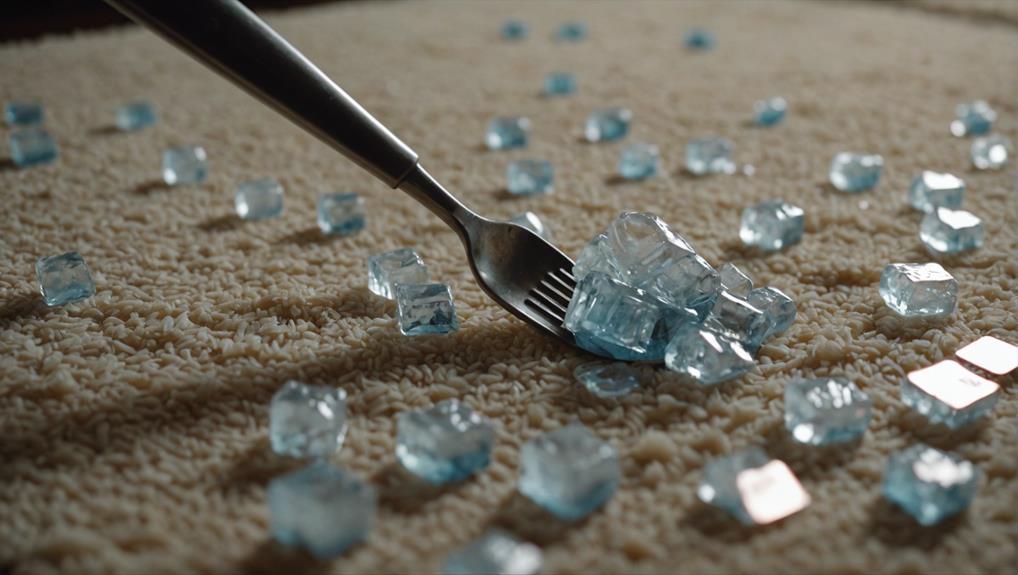
Consider employing the plastic bag and spoon technique as a practical method for efficiently removing wax from your carpet. Here's how you can use this simple yet effective approach:
- Place a plastic bag over the wax stain to contain the mess and simplify the cleanup process.
- Use a spoon to gently press on the plastic bag, transferring heat to soften the wax.
- The heat from the spoon helps the wax adhere to the plastic bag, making it easier to lift off the carpet fibers.
- Dispose of the plastic bag with the removed wax properly to prevent spreading the mess.
- This technique is a straightforward way to remove wax from your carpet without causing damage or leaving any residue behind.
Removing Wax With Baking Soda
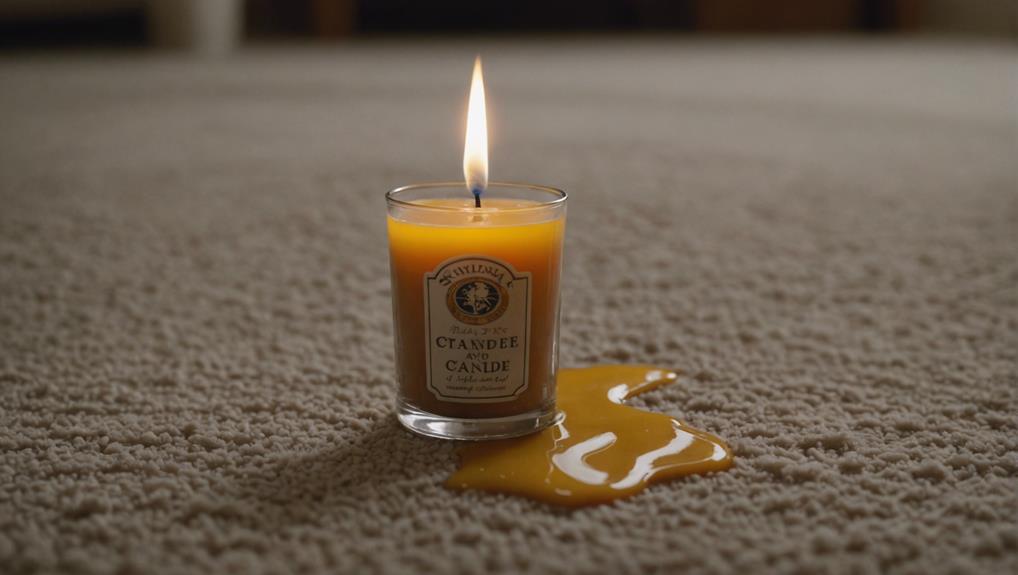
When removing wax from your carpet with baking soda, remember that this method involves the absorption of the residue.
By sprinkling baking soda over the wax and gently scrubbing, you can effectively lift the wax off the carpet fibers.
This gentle approach helps restore your carpet's appearance without causing damage.
Baking Soda Absorption Method
For a quick and efficient way to remove wax from your carpet, try the Baking Soda Absorption Method.
Here's how to do it:
- Sprinkle baking soda over the wax stain to absorb the wax and lift it from the carpet fibers.
- Gently scrub the baking soda into the wax using a brush or cloth to aid in the removal process.
The baking soda helps to lift the wax residue from the carpet, making it easier to clean.
- After scrubbing, vacuum the area to remove the baking soda along with the absorbed wax residue.
This method is effective in removing wax from carpets and restoring their appearance.
Freezing and Scraping Technique
To maximize the effectiveness of the Baking Soda Absorption Method for removing wax from your carpet, consider incorporating the Freezing and Scraping Technique for better results.
Start by using a bag of ice or an ice pack to freeze the wax on your carpet. This process hardens the wax, making it easier to scrape off. Grab a butter knife or a dull knife to lift as much wax as possible from the carpet fibers.
Once you have removed the hardened wax, sprinkle baking soda over the affected area. Gently scrub the baking soda into the carpet using a brush or cloth to absorb any remaining residue.
After letting the baking soda sit for a few minutes, vacuum the area to eliminate any leftover wax particles and baking soda. This fast and efficient method ensures that you can successfully remove wax from your carpet without causing any damage.
Frequently Asked Questions
How to Get Wax off the Carpet?
To get wax off the carpet, freeze it with an ice pack for 10 minutes. Gently scrape off frozen wax with a butter knife. Iron over a towel to lift remaining wax. Clean with carpet cleaner or rubbing alcohol. Vacuum when dry.
Does Vinegar Remove Wax From Carpet?
You bet vinegar removes wax from carpet! Dab with vinegar-soaked cloth, blot, and watch the magic. Don't soak it! Protect your carpet and let vinegar's natural power do the heavy lifting.
How Do You Remove Wax Fast?
Looking to remove wax fast? Freeze it first, then scrape and iron to lift it off. Clean the area with a carpet cleaner or rubbing alcohol, then vacuum once dry. Your carpet will be wax-free in no time!
Can Hydrogen Peroxide Get Wax Out of Carpet?
Hydrogen peroxide can effectively remove wax from your carpet. Test a small area first for compatibility. Apply the hydrogen peroxide to break down the wax, making it easier to lift. Follow up with a thorough cleaning and drying process.
Does Rubbing Alcohol Remove Wax From Carpet?
When you spill wax on your carpet, rubbing alcohol is your secret weapon. It breaks down the wax, making it a breeze to lift off. Dab and blot gently to avoid spreading the stain, then vacuum for a pristine finish.
What’s the best way to remove melted substances from carpet?
When dealing with a quick fix for melted plastic on your carpet, it’s best to act fast. Use a butter knife to carefully scrape off any excess melted plastic. Then, place a paper towel over the affected area and iron it on low heat to soften the plastic before gently pulling it off.
Conclusion
To sum up, removing wax from your carpet can be a quick and easy process with the right tools and techniques. While it may seem like a challenging task, following the steps outlined in this article will help you tackle the problem efficiently.
Remember, patience and persistence are key in achieving successful results. Don't let a little spilled wax ruin your carpet – with these methods, you can restore it to its former glory in no time.
